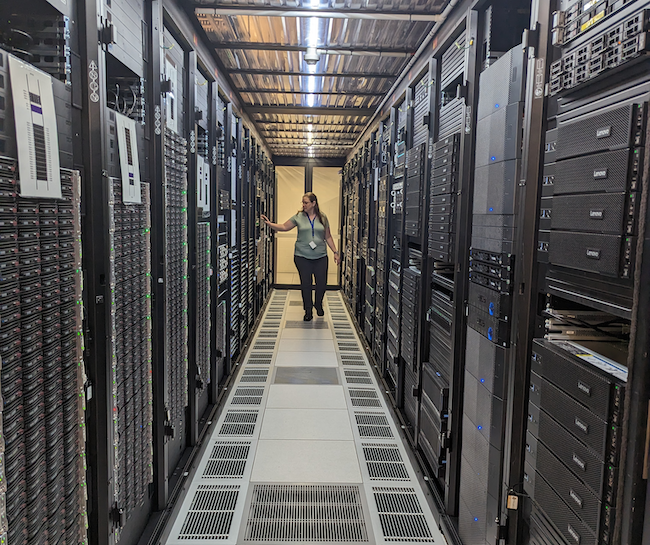A wave of new upgrades are on the way for The University of Queensland’s latest supercomputer, Bunya.

New-generation graphics processing units (GPUs), thousands more central processing unit (CPU) cores, and more memory are being added to Bunya.
Phase 2.0 of hardware procurement for Bunya (Phase 1.0 was launched last December) is nearing completion.
There are three new node types being added to Bunya. The first type, adding a whole set of new capabilities to the high-performance computer (HPC), is a fleet of new-generation Nvidia H100 GPU nodes for accelerated high-performance computing, state-of-the-art machine learning and artificial intelligence.
The second type, adding visual computing and high-performance desktop services to Bunya, is a fleet of new-generation Nvidia L40 GPU nodes for researchers that need visual, interactive and graphical applications in their high-performance workflows.
Finally, a fleet of new-generation CPU nodes is also being added to Bunya for generic workloads. These nodes will utilise the AMD EPYC Generation 4 (Genoa) CPUs. This will bring Bunya to almost 21,000 CPUs.
Each new CPU node features at least 1.5 TB of next-generation DDR5 memory, with GPU nodes featuring 2 TB of DDR4 memory.
RCC Chief Technology Officer Jake Carroll said: “In real terms for researchers, Bunya Phase 2.0’s CPU upgrades translate to an approximately 15 per cent increase in performance without any further changes to their codes that are already running on Bunya Phase 1.0.
“On the accelerated computing front, we’re going to provide researchers with the very best the industry has to offer. Compared to previous generation GPUs, such as the A100, the H100 will provide a 30-times improvement in AI inference and around a seven-times performance boost in training performance. We believe researchers will be very happy with the new offering,” said Jake.
Please see the technical specifications for Bunya Phase 2.0 further below.
UQ has allocated funding to expand Bunya’s capabilities and capacity over the next few years. The RCC team is already in the early planning stages of Bunya Phase 3.0, with next-generation CPU, GPU and interconnect technologies to provide researchers with further cutting-edge capabilities.
Bunya has replaced UQ’s legacy HPCs Awoonga, FlashLite and Tinaroo. Awoonga was shut down in March 2022, FlashLite in early January 2023, and Tinaroo in March 2023.
Wiener, UQ’s imaging-intensive, GPU-enhanced supercomputer, continues to operate.
Bunya is available for UQ researchers and other QCIF member researchers.
For more information about Bunya, please visit our Bunya webpage, and read our previous articles about the HPC:
- UQ’s new supercomputer now available for wider UQ use
- UQ’s new supercomputer nears testing phase
- UQ acquires new supercomputer.
Bunya Phase 2.0 technical specifications
Bunya Phase 2.0 will deliver:
- Another 6,000 CPUs (3,000 cores), this time, utilising AMD’s latest Genoa series CPUs, bringing Bunya to almost 21,000 CPUs (10,500 cores) available for researchers.
- 1.5 TB of DDR5 memory per node. Twelve 64-bit DDR5 memory channels increase the memory bandwidth available to Genoa processors to 460.8 GB/s per socket, a significant increase compared to the 204.8 GB/s available to current-generation AMD Milan CPUs available in Bunya Phase 1.0
- A fleet of new-generation GPUs for:
- Accelerated high-performance computing workloads and state-of-the-art machine learning/artificial intelligence (the Nvidia H100) performance.
- High-performance visualisation and HPC desktop services (the Nvidia L40’s).



